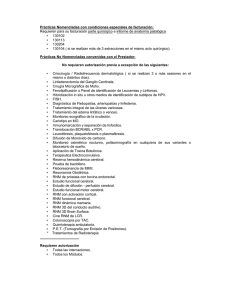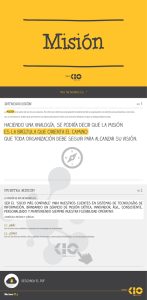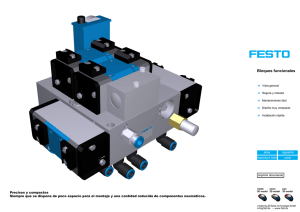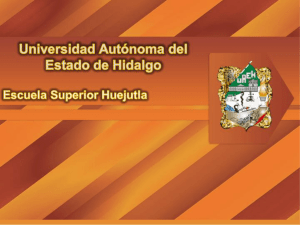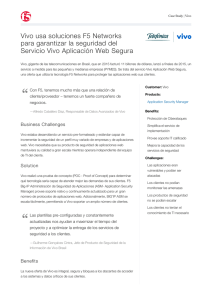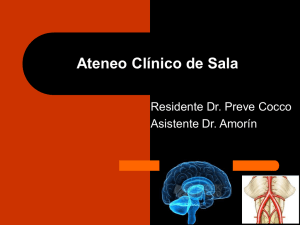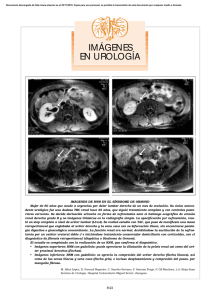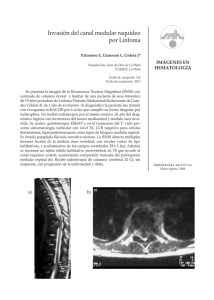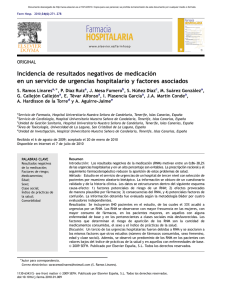Planning US distribution networks with the Reference Network
Anuncio
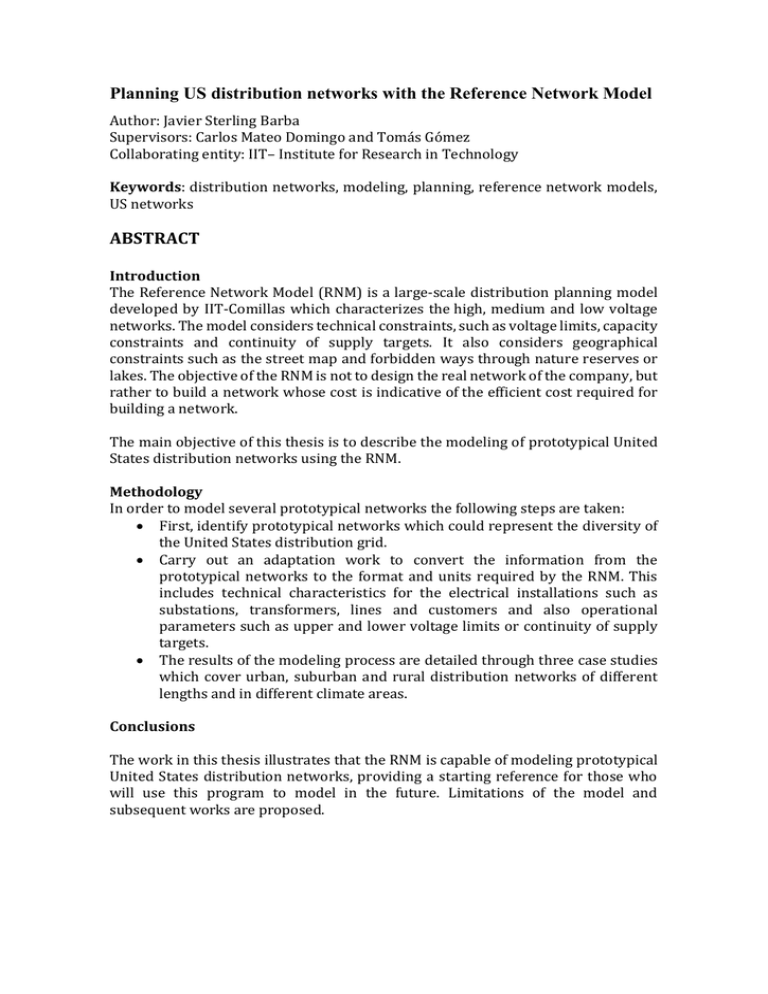
Planning US distribution networks with the Reference Network Model Author: Javier Sterling Barba Supervisors: Carlos Mateo Domingo and Tomás Gómez Collaborating entity: IIT– Institute for Research in Technology Keywords: distribution networks, modeling, planning, reference network models, US networks ABSTRACT Introduction The Reference Network Model (RNM) is a large-scale distribution planning model developed by IIT-Comillas which characterizes the high, medium and low voltage networks. The model considers technical constraints, such as voltage limits, capacity constraints and continuity of supply targets. It also considers geographical constraints such as the street map and forbidden ways through nature reserves or lakes. The objective of the RNM is not to design the real network of the company, but rather to build a network whose cost is indicative of the efficient cost required for building a network. The main objective of this thesis is to describe the modeling of prototypical United States distribution networks using the RNM. Methodology In order to model several prototypical networks the following steps are taken: First, identify prototypical networks which could represent the diversity of the United States distribution grid. Carry out an adaptation work to convert the information from the prototypical networks to the format and units required by the RNM. This includes technical characteristics for the electrical installations such as substations, transformers, lines and customers and also operational parameters such as upper and lower voltage limits or continuity of supply targets. The results of the modeling process are detailed through three case studies which cover urban, suburban and rural distribution networks of different lengths and in different climate areas. Conclusions The work in this thesis illustrates that the RNM is capable of modeling prototypical United States distribution networks, providing a starting reference for those who will use this program to model in the future. Limitations of the model and subsequent works are proposed. Planificando redes de distribución en Estados Unidos con el Modelo de Red de Referencia Autor: Javier Sterling Barba Directores: Carlos Mateo Domingo y Tomás Gómez Entidad colaboradora: IIT– Instituto de Investigación Tecnológica Palabras clave: redes de distribución, modelado, planificación, modelo de red de referencia, redes estadounidenses RESUMEN Introducción El Modelo de Red de Referencia (RNM por sus siglas en inglés) es un modelo a gran escala para redes de distribución desarrollado por el IIT-Comillas, el cual caracteriza las redes de alta, media y baja tensión. El modelo considera restricciones técnicas como límites de tensión, restricciones de capacidad y continuidad de suministro. También considera restricciones geográficas como mapas de calles y trazados prohibidos a través de reservas naturales o lagos. El objetivo del Modelo de Red de Referencia no es diseñar la red real de la compañía, sino construir una red cuyo coste sea indicativo del coste eficiente requerido para construir dicha red. El objetivo principal de este trabajo es describir el modelado de redes prototípicas estadounidenses utilizando el RNM. Metodología Para modelar diversas redes prototípicas se deben dar los siguientes pasos: En primer lugar, identificar redes prototípicas que puedan representar la diversidad del sistema de distribución estadounidense. Realizar un trabajo de adaptación para convertir la información de las redes prototípicas al formato y unidades requeridas por el RNM. Esto incluye características técnicas para las instalaciones eléctricas como transformadores, líneas y clientes, además de parámetros operacionales como límites superior e inferior de tensiones u objetivos de continuidad de suministro. Los resultados del proceso de modelado se detallan a través de tres casos de estudio, que tratan sobre redes urbanas, suburbanas y rurales de distintas longitudes y en distintas áreas climáticas. Conclusiones El trabajo en esta tesis muestra que el RNM es capaz de modelar redes prototípicas estadounidenses, aportando una referencia inicial a aquellos que usen el modelo en el futuro. También se comentan limitaciones del modelo, trabajos en desarrollo y tareas que se podrían llevar a cabo como continuación de este trabajo.
